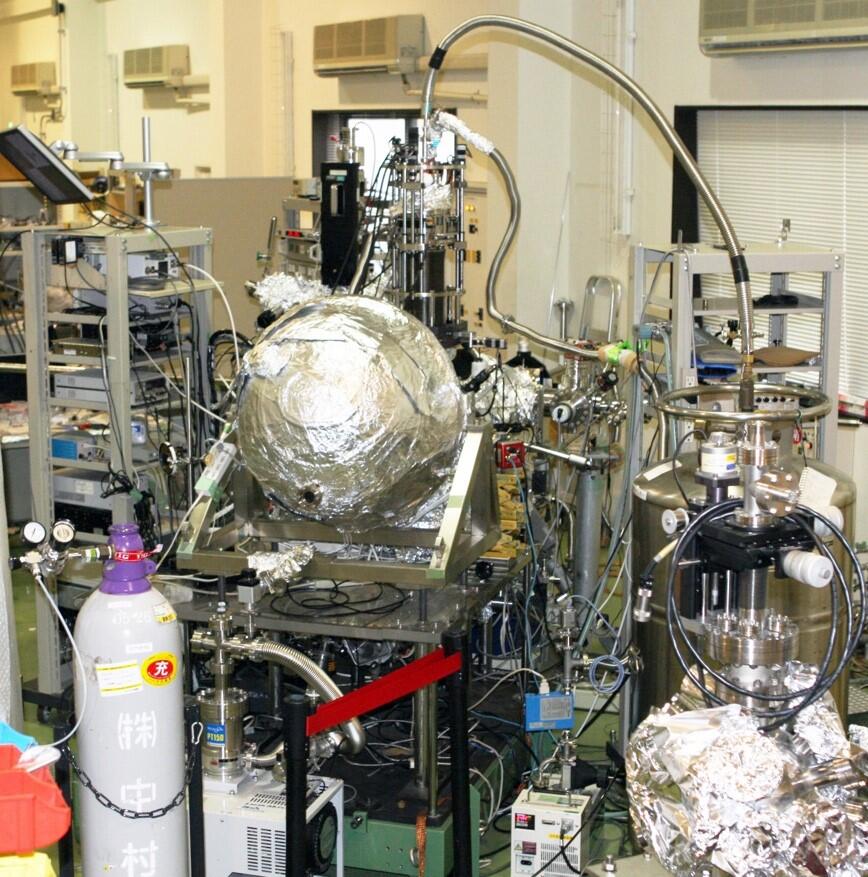A research group consisting of graduate student Amit Kumar of the Graduate School of Science, Hiroshima University, graduate student Yudai Miyai of the Graduate School of Advanced Science and Engineering, Hiroshima University, and Assistant Professor Shiv Kumar and Professor Kenya Shimada of the Hiroshima Synchrotron Radiation Center (HiSOR), Hiroshima University, has carried out angle-resolved photoemission spectroscopy (APRES) experiments using a UV laser focused on a microscopic area and quantified the degree of scattering of the topological surface electrons of Bi2Te3 (known as a typical 3D topological insulator) due to atomic thermal vibration, clarifying for the first time that this is determined by the number of scattering channels.

Provided by the Hiroshima Synchrotron Radiation Center, Hiroshima University
Electron scattering due to atomic thermal vibration is known as electron-phonon interaction, and the coupling parameter is the scale that represents the size of this. Conventionally, the electron-phonon coupling parameter of topological surface electrons differ by an order of magnitude depending on measuring conditions and techniques, and it was not confirmed how this magnitude is determined.
The research group carried out APRES experiments using a UV laser focused on a microscopic area to determine the coupling parameter of the topological surface state of Bi2Te3. The group carried out highly accurate experiments by changing the temperature from a low temperature (-256℃) to room temperature (27℃) as atomic thermal vibration increases with temperature. By investigating the relationship between electron energy and momentum, they found that the energy level of the topological surface electrons increased as the temperature rose, and the band gap decreased in the bulk, where electricity is not conducted. The size of the band gap provides the energy needed to move the insulator's electrons. It became clear that the decreased band-gap size is related to the temperature dependence of the scattering intensity of the topological surface electrons, and that electron-phonon interaction plays a key role.
When they investigated the electron-phonon coupling parameter of the topological surface electron, the group learned that its size changed depending on the energy, ranging from 0.02 to 0.13. This value is smaller than 0.2, the coupling parameter of copper used in power cables, and 0.4, the coupling parameter of aluminum used in cooking equipment. It means the topological surface electrons are less affected by the atomic thermal vibration. Moreover, a detailed look at the energy dependence of the coupling parameter showed that it corresponded well to the energy dependence of the scattering intensity of the topological surface electrons obtained during the experiment. Electron scattering intensity is proportionate to the number of scattering processes, so for the first time, the group clarified that the coupling parameter is dependent on the number of scattering processes. Comparing the results from the experiment to the outcomes of theoretical research showed that the size of the coupling parameter and its energy dependence also corresponded well quantitively.
Professor Shimada commented, "If the electron-phonon coupling parameter is small as in Bi2Te3, superconductivity seems to be unlikely based on the BCS theory. However, a very similar 3D topological insulator Bi2Se3 showed superconductivity if a metallic element like Copper or Niobium was doped. The superconducting state of doped 3D topological insulators would be very peculiar. Researchers have proposed that an electronic state that behaves like Majorana fermions may appear in superconducting topological insulators. It is hoped that this state can also be used in quantum computers. On the other hand, Bi2Te3 is a well-known substance that is used as a thermoelectric material, producing electricity from heat. Since thermoelectric materials produce electricity if there is a temperature difference, it is possible that they can be used to convert waste heat generated by engines or incinerators into electricity. Recently, researchers have undertaken data-driven material development using first-principles calculations and machine learning. In the future, we expect that the data-driven materials development would be further accelerated by combining experimentally determined coupling parameters of interacting electrons and theoretical calculations."
Journal Information
Publication: PHYSICAL REVIEW B Letter
Title: Temperature-dependent band modification and energy dependence of the electron-phonon interaction in the topological surface state on Bi2Te3
DOI: 10.1103/PhysRevB.106.L121104
Related works:
Publication: Ultramicroscopy
Title: Development of laser-based scanning μ-ARPES system with ultimate energy and momentum resolutions
DOI: 10.1016/j.ultramic.2017.06.016
This article has been translated by JST with permission from The Science News Ltd. (https://sci-news.co.jp/). Unauthorized reproduction of the article and photographs is prohibited.




